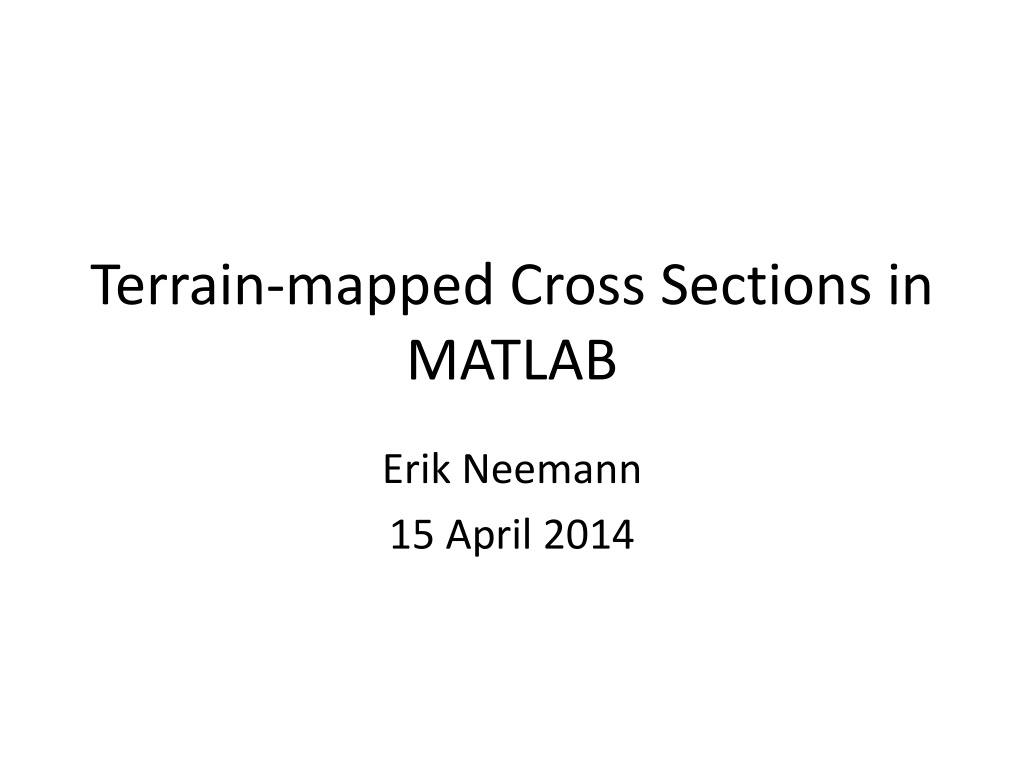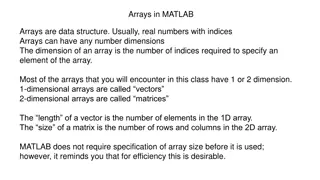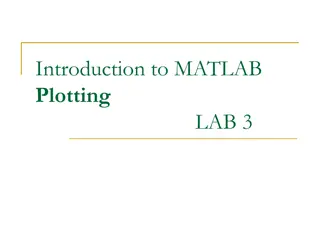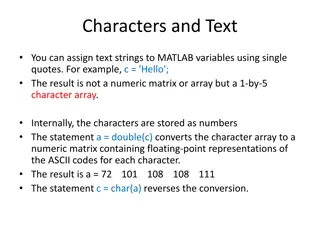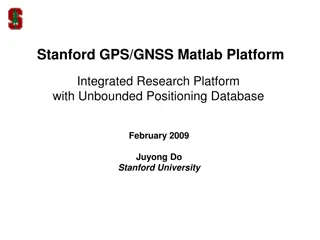Terrain-Mapped Cross Sections in MATLAB
Generate visually similar cross sections in MATLAB as seen in RIP, with the ability to plot time-averaged data. The code is designed to create cross sections of zonal wind components in the Uintah Basin, utilizing time-averaged data from wrfout files. Options for customizable parameters like depth, height, and width allow for flexibility in data presentation. The code outlines the process of cutting angled cross sections through a 3D domain, interpolating data points, and plotting the final terrain-mapped cross section.
Download Presentation

Please find below an Image/Link to download the presentation.
The content on the website is provided AS IS for your information and personal use only. It may not be sold, licensed, or shared on other websites without obtaining consent from the author. Download presentation by click this link. If you encounter any issues during the download, it is possible that the publisher has removed the file from their server.
E N D
Presentation Transcript
Terrain-mapped Cross Sections in MATLAB Erik Neemann 15 April 2014
Objective Create cross sections visually similar to what is produced in RIP Add capability to plot time-averaged data
Before After
Notes Code originally built to produce cross section of zonal wind component in Uintah Basin Data is time-averaged Based on wrfout files every 6 hours with 6 times each (hourly data) Data is spatially averaged over 10 points on each side of cross section centerline (customizable) Depth of cross section originally set to 25 model levels and 6000 m (customizable) Total height (in m) must cover height of top model level + terrain elevation (~3500 + 2000 = 5500 m, in my case) Produces multi-page pdf for figures and requires ps2pdf function, found here: http://www.mathworks.com/matlabcentral/fileexchange/19516- ps2pdf
Options & Editable parameters Can skip time-average part and just use on single wrfout file or time Just input start & end points for cross section (i,j) and the code will calculate the slope and y-intercept of the equation for your cross section Point A (i_pta, j_pta) - westernmost point Point B (i_ptb, j_ptb) - easternmost point depth (25) - to cover all data along xsect (model levels) width (10) - grid point avg on each side of xsect
Basic Steps of the Code 1. Cut angled xsect through 3D domain Results in 2D array of data 2. Find all model level heights at each point along xsect 3. Plot data value in new array at model level height New array has 6000 vertical levels of 1 meter each 4. Linearly interpolated in vertical direction between data points for each gridpoint along xsect 5. Outline terrain by making all data below ground level = -9999 6. Plot final data
Output Displays endpoints of cross section, centerline, and outer bounds for spatial average
Output Final terrain-mapped cross section
